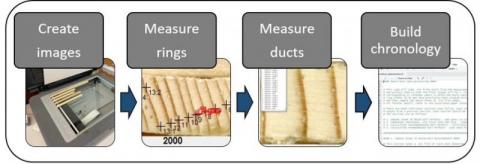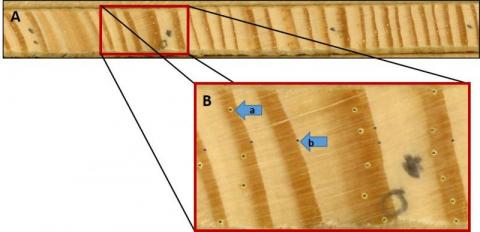Trees have numerous defenses to ward off attacks from insects and pathogens. One major defense is resin, which acts as both a physical and chemical defense. In pine species, resin is produced and stored in specialized structures called resin ducts or canals. These ducts form an interconnected network that delivers resin to wounding sites. As sites of resin synthesis, storage, and delivery, resin ducts are a good measure of how resistant trees are to insects and pathogens.
Because resin ducts are permanently embedded within the annual rings of tree wood, we can retrospectively measure changes in defense over time and determine factors that contribute to this change, such as past climate and disturbance. We can also make comparisons among species.
Here, we provide methods to measure axial resin ducts in annual tree rings. These methods provide the necessary protocols for consistent terminology and quantification of xylem resin ducts, which will also allow easier cross-comparison among present and future studies of either different species or the same species under different conditions. We describe the basic workflow to build a resin duct chronology, including tree core preparation, procedures to image and measure individual ducts, and software code to compile resin duct measurements into a complete chronology with both standardized and unstandardized duct metrics for further analyses.

